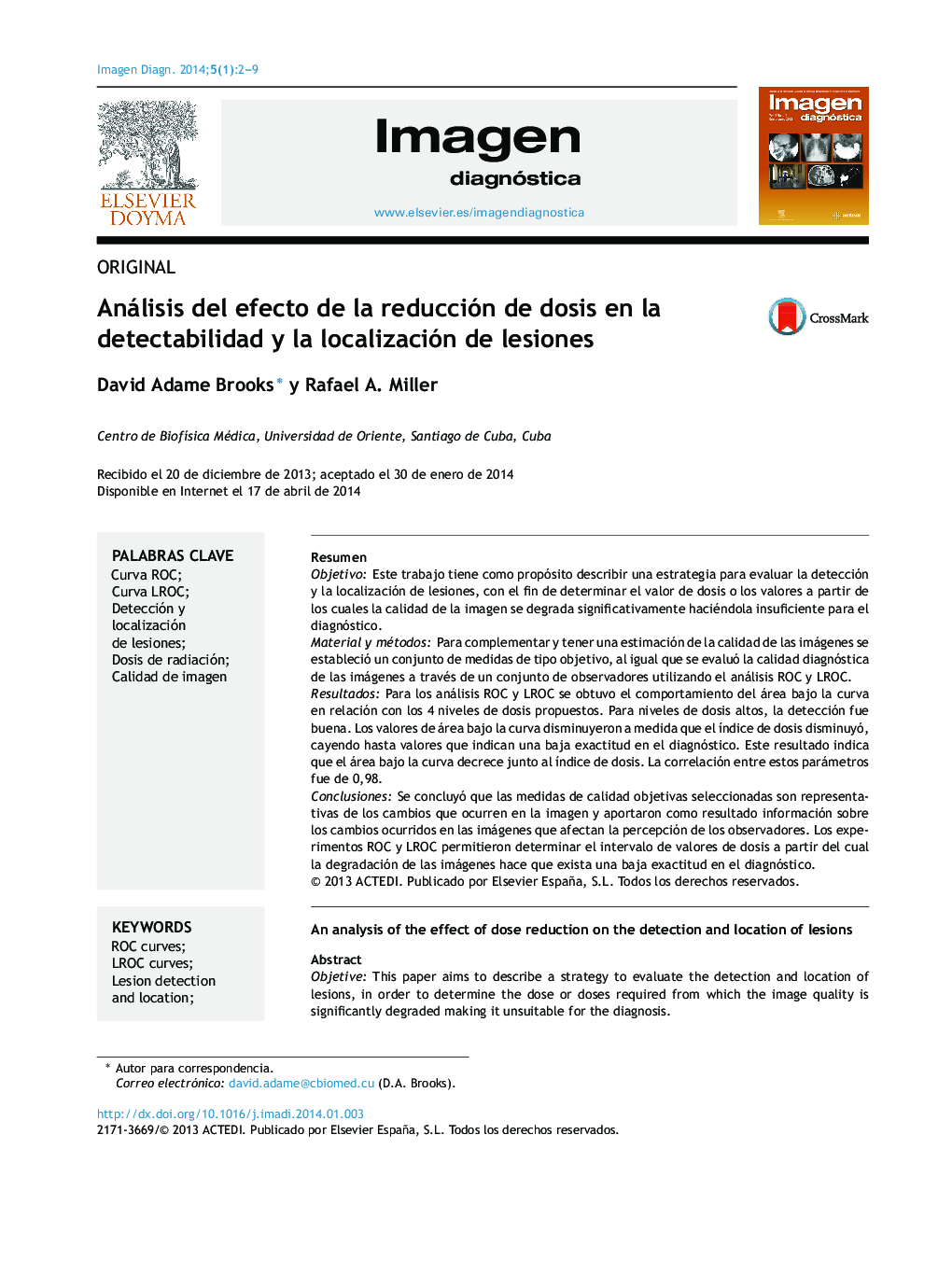| Article ID | Journal | Published Year | Pages | File Type |
|---|---|---|---|---|
| 2733995 | Imagen Diagnóstica | 2014 | 8 Pages |
ResumenObjetivoEste trabajo tiene como propósito describir una estrategia para evaluar la detección y la localización de lesiones, con el fin de determinar el valor de dosis o los valores a partir de los cuales la calidad de la imagen se degrada significativamente haciéndola insuficiente para el diagnóstico.Material y métodosPara complementar y tener una estimación de la calidad de las imágenes se estableció un conjunto de medidas de tipo objetivo, al igual que se evaluó la calidad diagnóstica de las imágenes a través de un conjunto de observadores utilizando el análisis ROC y LROC.ResultadosPara los análisis ROC y LROC se obtuvo el comportamiento del área bajo la curva en relación con los 4 niveles de dosis propuestos. Para niveles de dosis altos, la detección fue buena. Los valores de área bajo la curva disminuyeron a medida que el índice de dosis disminuyó, cayendo hasta valores que indican una baja exactitud en el diagnóstico. Este resultado indica que el área bajo la curva decrece junto al índice de dosis. La correlación entre estos parámetros fue de 0,98.ConclusionesSe concluyó que las medidas de calidad objetivas seleccionadas son representativas de los cambios que ocurren en la imagen y aportaron como resultado información sobre los cambios ocurridos en las imágenes que afectan la percepción de los observadores. Los experimentos ROC y LROC permitieron determinar el intervalo de valores de dosis a partir del cual la degradación de las imágenes hace que exista una baja exactitud en el diagnóstico.
ObjetiveThis paper aims to describe a strategy to evaluate the detection and location of lesions, in order to determine the dose or doses required from which the image quality is significantly degraded making it unsuitable for the diagnosis.Methods and materialsA group of objective measurements were established to complement and make an estimate of the diagnostic quality of the images which were also evaluated by a group of observers using ROC and LROC analyses.ResultsFor ROC and LROC analyses, the behaviour of the area under the curve in relation to the four proposed dose levels was obtained. For high dose levels, detection was good. The values of area under the curve decreased as the dose rate decreased, falling to values indicating low accuracy in diagnosis. These results indicate that the area under the curve decreases by the dose rate. The correlation between these parameters was 0.98.ConclusionsWe conclude that the objective quality measurements selected are representative of the changes that occur in the resulting image, and provided information on changes in the perception of observers. The ROC and LROC experiments allowed the range of dose values to be determined, from which the image degradation leads to a low accuracy in the diagnosis.
